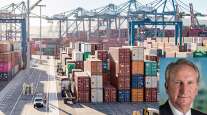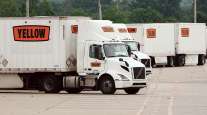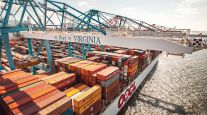Senior Reporter
Port of L.A. Operating at 80% Because of Coronavirus
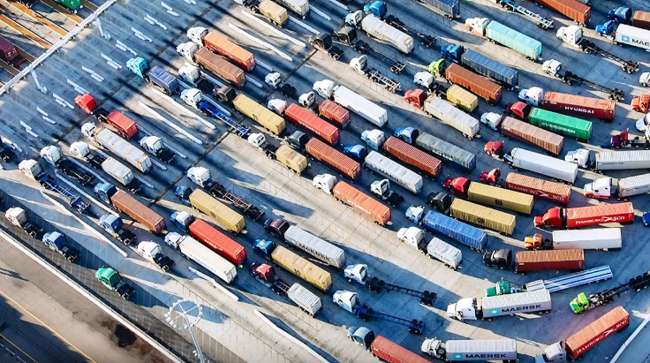
[Stay on top of transportation news: Get TTNews in your inbox.]
Officials at the Port of Los Angeles, the nation’s largest, said the facility is operating at about 80% as factories in China slowly come back online, and the U.S. economy struggles amid the coronavirus pandemic.
Gene Seroka, executive director of the port, told reporters March 26 that he made the estimation after reviewing video of the 7,500-acre port from a drone, utility power bills and historical data, including air quality.
“The Port of Los Angeles is open for business,” Seroka said.

Seroka
“All of our marine terminals are operating and functional. But these are extraordinary circumstances,” he continued. “We have ample space and room to manage cargo as we normally do. The supply chain needs to remain fluid so these critical goods and other products can get to consumers and others who need them.”
Seroka said the port can operate throughout the crisis because California Gov. Gavin Newsom designated it an “essential” service.
Seroka said so far none of the port’s estimated 517,000 employees has become ill. Still, he said, within the past few days sanitation upgrades have been made.
He said officials learned the port lacked sufficient cleaning solution and other materials such as latex gloves to ensure the machinery, communications equipment and other tools of the trade were clean before they were passed from one longshoreman to another.
“We procured two 350-gallon tanks of industrial bleach, which then our hazmat teams began to mix, and we had staff go out and buy 32-ounce spray bottles to distribute to all of our terminals in Southern California,” he added.
Seroka said managers recently reached an agreement with the longshoremen on how they will manage the facility to prevent the spread of the virus.
“Protections, protocols, cleaning supplies and equipment were all discussed at the highest level,” he said. “We will continue to work as closely as we can with both sides, including our truck community, to make sure that social distancing takes place as trucks enter and depart our marine terminals.”
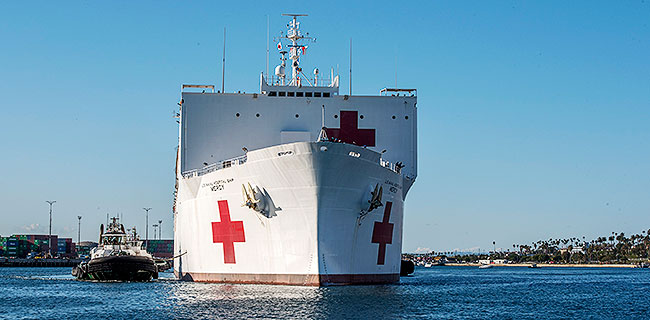
USNS Mercy arrives in Los Angeles. (U.S. Navy photo by Mass Communication Specialist 1st Class David Mora Jr./Released)
On March 10, the port announced its February container volume fell by nearly 23% as workers processed 544,037 20-foot equivalent units compared with 705,306 TEUs in the same period a year earlier. Seroka said the downturn at the port will continue through the end of the year, citing the double shock to the supply chain stemming from the Trump administration’s trade war with China and COVID-19.
“We see the effects of both going through the end of this year, at the very least,” he said.
Seroka added: “We continue to see a much lighter volume than normal at this point in time. Whether working or sheltering at home, we’re not buying as much as we were. We believe the retail community will be very conservative in their ordering, and traffic will be very light by our standards.”
Seroka insisted that the port will be able to continue to operate smoothly, even as a 1,000-bed floating hospital, the USNS Mercy, is now docked at the port to provide medical relief to Southern California hospitals should they become overrun by patients infected with the coronavirus.
“We will be able to work very closely together to make sure that both missions are fully accomplished.”
Want more news? Listen to today's daily briefing:


